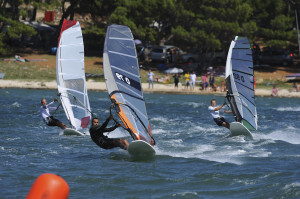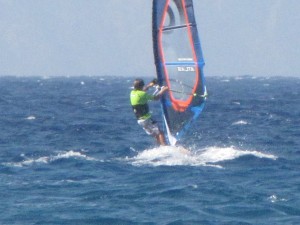Considering to the positive feedbacks I had on the last post on thermoregulation in MTB, I decided to keep on going.
And this time I’m gonna test myself on the analysis of a Windsurf board, and here the topic is getting ‘delicate’…
Why ‘delicate’? Because we’re approaching a sport equipment that has to be, at the same time:
- Lightweight as much as possible
- Shock resistant
- Environmental temperature variations proof
- Stiff
- Perfectly water proof, it doesn’t have to absorb water at all
The right temperature level during production processes ensures repetitivity to the product, and the respect of its characteristics according to project technical specifications.
Modern windsurf boards are typically made using a technology that employs an inner core part composed in expanded polystyrene (EPS), covered by a sandwich skin made in carbon fibre/kevlar and resins. The inner core is manufactured using modern cad-cam systems.
The external skin can go through several variations, depending on the manufacturer, but it’s broadly very similar for all.
How are Tempco thermal machines involved in the windsurf board production cycle?
- Cooling/thermostatation of carbon fibre curing autoclave
- Injection plants thermoregulation of thermoplastic inserts, such as dowels and fin slot boxes
- Temperature regulation of production processes of kevlar and carbon yarns
- Cooling of components in foaming for footstraps manufacturing
A windsurf board has one or more fins, depending on the specific model and sport specialty it is intended for. Fins are manufactured with similar processes to those employed for boards, not involving thermal cycles, but requiring high pressure levels, and Tempco can supply solutions for the oil cooling in hydraulic presses.
The board itself represents a complex topic, yet, and so I kept the drive… in other words, the sail, for a future article.
…And this time too, now I would gladly opt for a windsurf ride, but too bad, no wind today!


